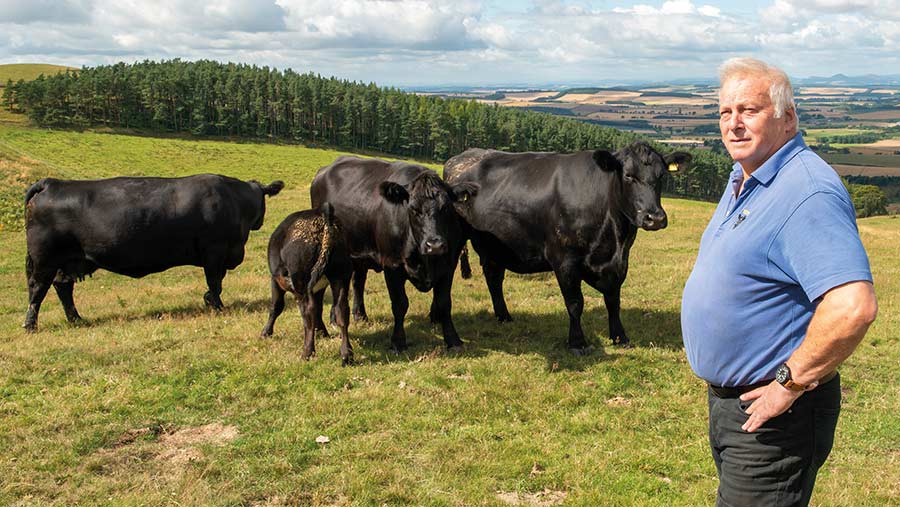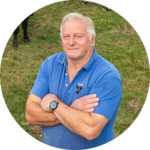Farmer Focus: Farming as climate and geography dictate
 © Angus Findlay
© Angus Findlay So, who am I? I am the fourth generation to farm at Morebattle Tofts, near Kelso, in the Scottish Borders, and I farm in partnership with my wife, Debbie, and our son, Robert.
We are near-neighbours to John Jeffrey and Neil Thomson, both former Farmers Weekly contributors.
Our farming operations consist of 566ha (1,400 acres) at Morebattle Tofts, 485ha (1,200 acres) at Clifton on Bowmont, near Yetholm, and 728ha (1,800 acres) that we contract farm at Yetholm Mains.
We also own 283ha (700 acres) in Fife, which is contract-farmed for us.
See also: Rival breeders’ collaboration sees Angus bull sales treble
Farming in the Cheviot Hills, the land rises from 91-548m above sea level, and being in a free-draining, low rainfall area dictates the type of farming.
Our farm is home to 375 suckler cows living outside year-round (except when calving), of which 200 are pedigree Aberdeen Angus along.
We also have 15 Beef Shorthorns (we’ve just sold 54 to start a new herd at Althorp in Northamptonshire) and five Murray Greys, and the rest are cross-breds – a mixture of the three breeds.
We run 1,500 Lairg-type North Country Cheviot and 20 Traditional Bluefaced Leicester sheep.
Aiming to be self-sufficient feedwise, and maintaining grass quality by rotation, we grow winter and spring barley, winter wheat, winter rye, winter oats and forage crops (kale and stubble turnips).
Given our rainfall and soil structure, we are not overstocked, nor do we expect record yields.
Travelling west from here you get an extra inch of rain for every mile. Hawick gets 1,220mm of rainfall (double ours) and has more moisture-retentive soils.
This microclimate allows us to outwinter livestock, which has the great advantage of lowering our production costs.
We have tried to breed superior suckler cows that produce high-quality cattle from grass and forage in an upland environment.
It appears the livestock industry has used more terminal genetics to the detriment of maternal traits. The result is a reduction in suckler cow numbers, particularly in the hills.
My view is quite simply: wrong cows, wrong place. But that’s a discussion for another day.
Calving and lambing are closing in. Preparation is now well in-hand. It has been a great winter; now we hope to have a suitable spring. I’ll report next time.

